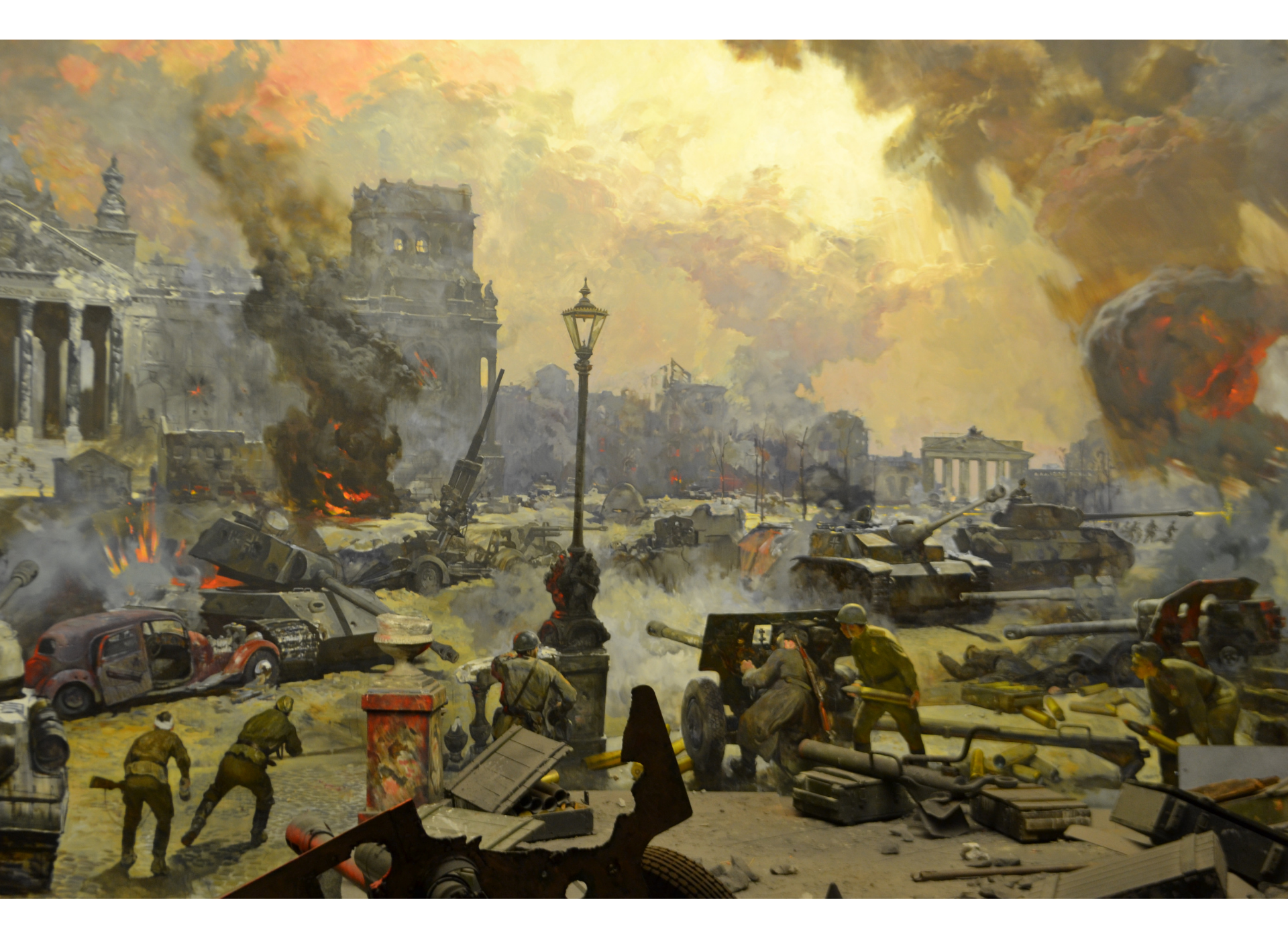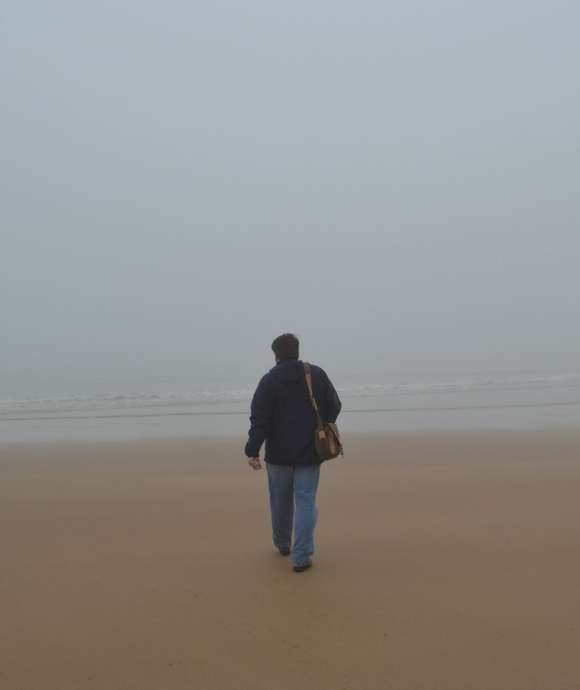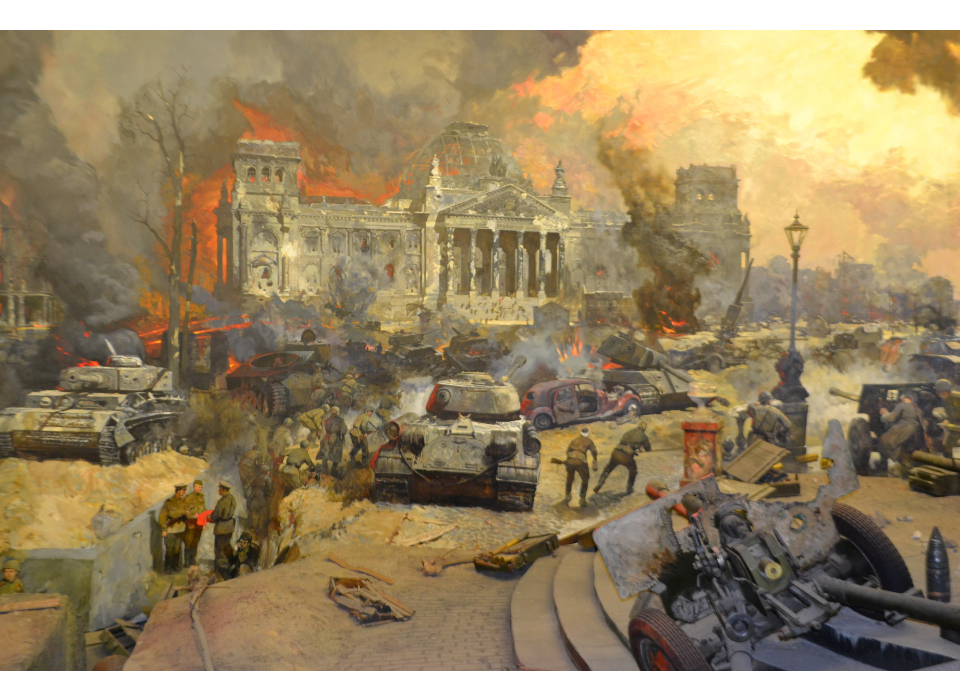For the Soviet Union, the conquest of Berlin was the culmination of the Great Patriotic War, bringing final and complete victory over Nazi Germany and the end of nearly four years of staggering brutality and relentless war on the Eastern Front. The climactic battle saw the city of Berlin virtually razed in a manner that recalled the Nazi treatment of Warsaw or Stalingrad. But the road that passed through Berlin in May 1945 was no end of history.
It is fitting that the diorama that portrays the final Soviet victory in Berlin is centered on the Reichstag building. The Reichstag building was not the true seat of the Nazi party or government—that was Hitler’s Reich Chancellery building, a few blocks away. But the rise of Adolf Hitler’s dictatorship was truly launched a month into his chancellorship when fire mysteriously broke out in the Reichstag building on February 27, 1933. Although the true cause of the fire has never been established, Hitler used the threat of Communist revolution to gain dictatorial powers. In that sense, the Reichstag building was where the political cancer of the Nazi regime metastasized in Germany and then spread across Europe from the Atlantic Ocean to the Volga River. In the spring of 1945, the Allies were bringing the war back to ground zero: Berlin, which before had been considered the most scientifically and culturally advanced capital in all of Europe.
The advance on Berlin began on April 16, 1945, with a massive Soviet offensive on the Seelow Heights, the last major defensive line the Germans held east of Berlin. The Red Army forces tremendously outnumbered the Germans by approximately 10 to 1 in troops and 20 to 1 in tanks, artillery, and guns. The Germans gave four days of heated battle, but the Soviet forces overwhelmed the German lines at the cost of over 30,000 killed.
By April 20, Hitler’s 56th birthday, the last gateway on the road to Berlin was open as the Red Army surged forward along lines from the north, east, and south. That day, Hitler inspected children who would fight the oncoming Red Army juggernaut while Soviet artillery from the First Belorussian Front in center of the Soviet line first began to fall on Berlin. Two days later, it was clear that the remaining remnants of the Wehrmacht were not enough to implement Hitler’s defensive plans for the city. Hitler had an epic meltdown before his staff in the Fuhrerbunker. He declared that the war was lost and blamed the generals whose military authority he had previously undermined and usurped (this event was famously portrayed in the 2004 movie Downfall). In the coming days, the Soviets encircled the city and then began to fight their way into the city center. It should be noted that the spirit of vengeance was strong, as the Red Army took revenge with mass rapes of German women and looting.
Before dawn on April 29, 1945, the Red Army crossed the Moltke Bridge spanning the Spree River and invaded into the heart of the city. With the Red Army only blocks away, Hitler was deep underground in his bunker. He dictated his Last Will and Testament to his secretary Traudl Junge, in which he blamed the German nation for loss of the war, and later that day married his mistress Eva Braun. At six the following morning, the Red Army attacked the Reichstag building, entering it in the afternoon but still fighting German forces in the rubble within the building. In the bunker under the Reich Chancellery that afternoon, Hitler and his wife committed suicide together. On May 2, 1945, the Red Army gained full control of the Reichstag building, and the German forces in Berlin surrendered that day.
The final diorama in the Great Patriotic War Museum in Moscow completes the great historical arc of the war between Nazi Germany and the Soviet Union. In the climactic scene, the Reichstag is ablaze in orange flames and purplish smoke as the Red Army swarms the streets of Berlin among burning tanks, guns, smashed cars, incinerated trees, and lampposts. Among the soldiers still darting and fighting in the streets, three figures stand near a wall. An officer appears to be handing a soldier the crimson red Victory banner that will be raised above the Reichstag, and symbolize the complete victory of the Soviet Union.

A day after the fall of Berlin, the famous photograph of the Victory banner being unfurled on top of the Reichstag was staged. To this day, visitors to the Reichstag building can see graffiti on the roof left there by Soviet soldiers.
There is an additional visual element to this diorama, however, that I think conveys a fitting conclusion to the story line. Visually to the right of the Reichstag building, visitors can see the unmistakable columns of the Brandenburg Gate in the distance. With the Red Army’s surge from the east set to collide with the Allied armies invading from the west, the Allies had agreed that to avoid friendly fire each would control a zone of conquered Germany, and while located deep in the Soviet zone it was agreed each Ally would control a zone of the capital, Berlin, while a permanent political solution was negotiated. This military agreement on the ground in 1945 hardened into a tense political standoff, and the Brandenburg Gate became a symbol of a divided Berlin, a divided Germany, and the Cold War.
Although it is barely visible or recognizable in the diorama, there is one other aspect of this scene for students of history to consider. On top of the Brandenburg Gate stands the Quadriga, a statue of four horses pulling a chariot under reins held by the Goddess of Victory. Originally meant as a symbol of peace when it was completed in 1793, the Quadriga became a symbol of German nationalism and unity after Napoleon took it back to Paris in 1806. Ironically, after Napoleon was defeated in the wake of his failed invasion of Russia, the statue was returned in 1814 back to Berlin and the Brandenburg Gate. All the major streams of subsequent German history—romanticism, nationalism, political unification, the idolization of strong leadership, and militarism—flow through the columns of the Brandenburg Gate, and under the Quadriga. But as the Battle of Berlin diorama shows, the stream of history has led to a moment of utter destruction and total ruin in 1945.
For those of us today looking back on the world of 1945, what is left is memory. Memory at the Great Patriotic War Museum will be the subject of the next two posts.
Note: This is the sixth of eight posts about the Great Patriotic War Museum in Moscow. Read Part One. Part Two. Part Three. Part Four. Part Five. Part Seven. Part Eight.

"No matter one’s age, travel is a unique and exciting educational experience. In my work, I have had the opportunity to reflect on history, events, and people in the places where they experienced life. Through the viewfinder, we can not only find history and perspective, but create memory, and evoke our evergreen past."
– Keith Huxen, PhD, Senior Director of Research and History, The National WWII Museum
Keith Huxen
Keith is the former Senior Director of Research and History in the Institute for the Study of War and Democracy at The National WWII Museum.
Cite this article:
MLA Citation:
APA Citation:
Chicago Style Citation:





![Max Fuchs, New York City cantor, sings as Rabbi Sydney [sic] Lefkowitz, Richmond, VA, conducts the first Jewish services from Germany.](/sites/default/files/styles/max_650x650/public/2025-10/image1.jpg)



